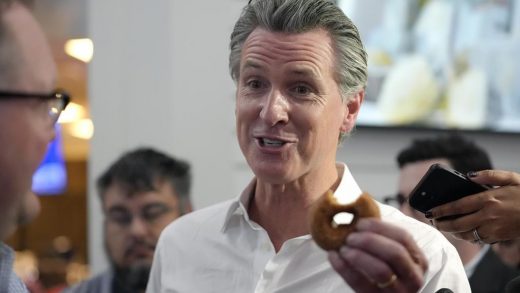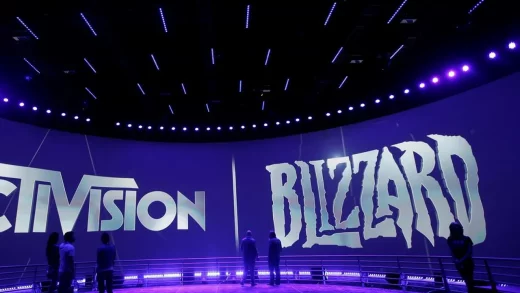:format(webp)/https://www.thestar.com/content/dam/thestar/entertainment/books/2023/05/11/lillian-allen-torontos-new-poet-laureate-on-taking-poetry-to-the-citys-street-corners/lillian_allen_performing.jpg)
Lillian Allen is considered to be the city’s godmother of rap/hip hop, dub and spoken word poetry scenes.
For years she was a fixture of the Queen Street circuit, when West Queen West was still edgy and centred the arts, poor artists and reggae and punk rock setting the scene. While the city and its people love that edginess, she said, our institutions haven’t quite caught up. That is part of the reason Allen, now 74, said she was surprised to get the email — and later the confirmation — that she was to be the city’s next poet laureate, with a term lasting three years, until 2026, taking over from the outgoing poet laureate A.F. Moritz.
The Star spoke with her about her approach to the role, how she’s going to bring poetry to the streets and stirring things up.
You’re known as the godmother of dub poetry, a form which is so physically and verbally creative. How will that have an impact on your approach to this role?
I would say that I brought that sensibility into the city some decades ago, with people like bpNichol and so forth, and lifted poetry a bit off the page. There’ll be work on the page too, because the page is important. But that other engagement, for people who are coming to language for play and the beauty of it, for communication, as opposed to super seriousness, getting published or getting assessed or in academia (saying): Here’s this dimension, this layer of life that you can just escape in and work your imagination.
Do you also see the role as being about recording the life of the city and poetry while you’re in the position?
I do see that as very important, if somebody looks back in 10 years or 20 years from now, they can say, “Oh, in 2023 to 2026, this was the city.”
There’s are also a lot of what I’d call hidden information about the city. Some of it has been written before but, you know, not everybody is reading the Dennis Lees or Michael Ondaatjes, or even Dionnes (Brand) beyond small bits and pieces about various things that happened. We have over 20,000 street corners. We had a Black (acting) mayor once; we were the leaders in terms of fibre optics; we go from the arts, we go from protest, we go from demanding our rights to all kinds of things, but they’re usually abstracted. What I would like to do is, along with that abstraction, put a name and a face to a process so that people can see that they’re part of this.
So make poetry accessible not only to understand, but also to write.
Yeah. And to ask the question “What can I do? How am I in this picture?” I’m also thinking about the nappers.
The nappers?
Yes, because I’m also getting into that category. I have a bunch of friends who are sailing into our 70s. I want to touch some of those folks and bring them in — lovers of poetry and writers of poetry — and giving people an opportunity to, you know, try their hand at poetry. And then we can take a nap. (Laughter)
You mentioned that there are 20,000 street corners in this city; how do they work into your vision work of what you might think possible?
Sound is so much a part of poetry; I work with that. I work with what I call pre-language and post-language. If you (stood), say, at Spadina and Dundas 20 years ago, and you had a tape recorder and you taped for an hour or two hours or four hours, and then you go out today, you would have different sounds. So capturing, taking a poetic element (which means an esthetic element with metaphorical implications) into those areas as kind of touch points. I remember, (Canadian artist) Kim Tomczak once saying that Weston Road and Rogers (Road) is the centre for somebody.
I’m just a stone’s throw from there. So the idea is that intersection is the centre of the universe for all the people who live around it.
Exactly. So that’s the kind of thing I’m interested in encouraging people to think about. What is it like for you? What’s important in your life? What’s your environment like? How do you create it? How do you recreate it? How are you a part of it? How does it feed you? How does it nourish you? What are you giving to it? You know, those kinds of questions I want people to be thinking about.
I’m looking forward to what will happen over the next few years. It sounds exciting.
I’m hoping it will be fresh and energetic and inspiring. This is just such a great city, you know. We do have are some pretty serious problems, but this is a soulful city. This is a livable city. It’s changing rapidly. But over the last few decades, the arts have provided this soulfulness to the city and this cross-fertilization that I don’t think you really have anywhere else. And the younger generation, you know, at least most of them, I say, are just so at ease with diversity and difference and newness and collaborations.
And so bringing some of these ideas from the street to the institutions is a real positive way forward.
The system hasn’t caught up. It still hems people in, the systemic kind of marginalization and other issues of discrimination held by the system. But people generally definitely don’t want the old-world narrowness of their grandparents or their parents.
That whole new generation of my time on Queen Street … opened up not just for Toronto, but for Canada, the possibilities of who we could be. And I think we’re working on that. Most times, I think, that’s how institutions get changed. It’s not from within.
JOIN THE CONVERSATION
does not endorse these opinions.




